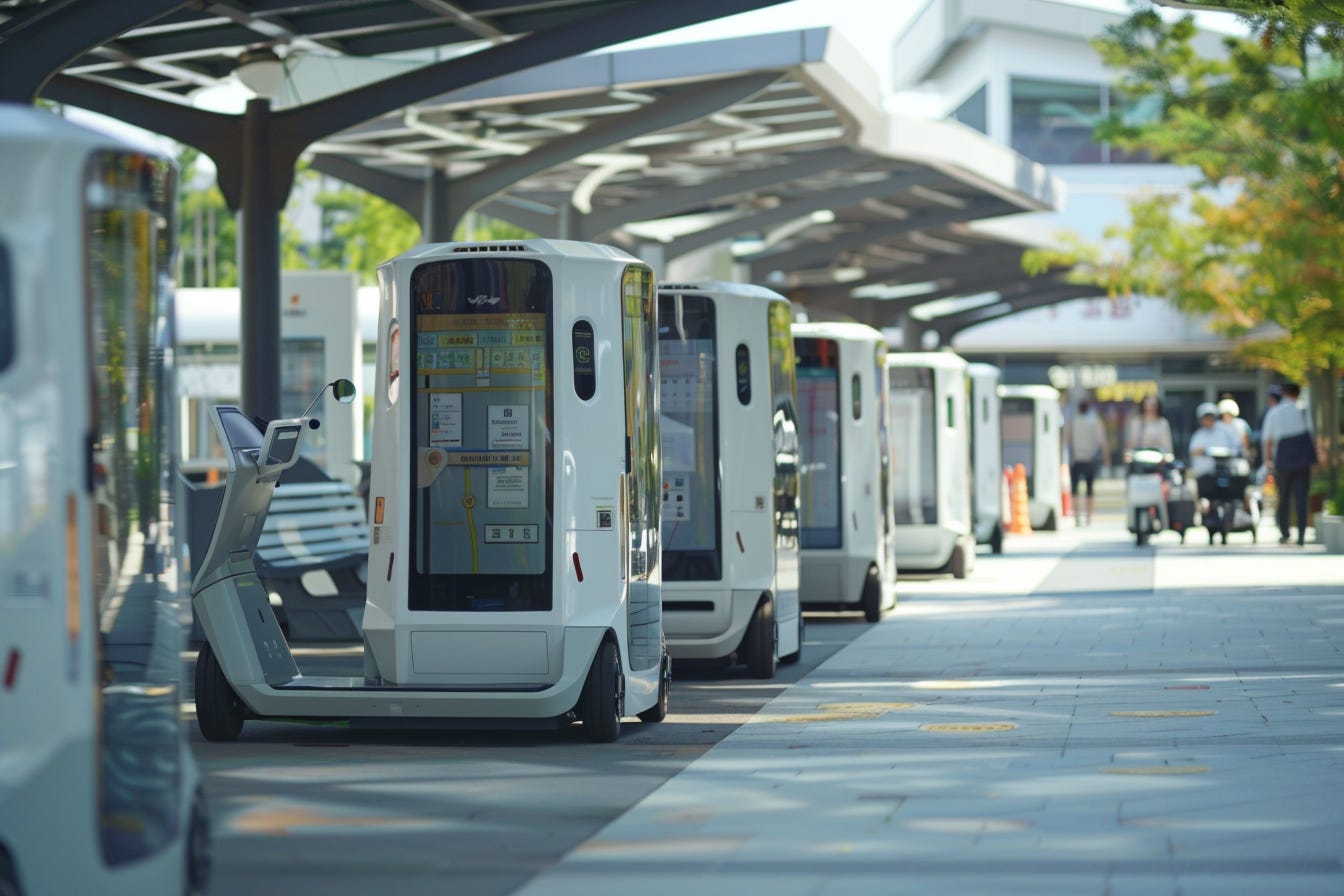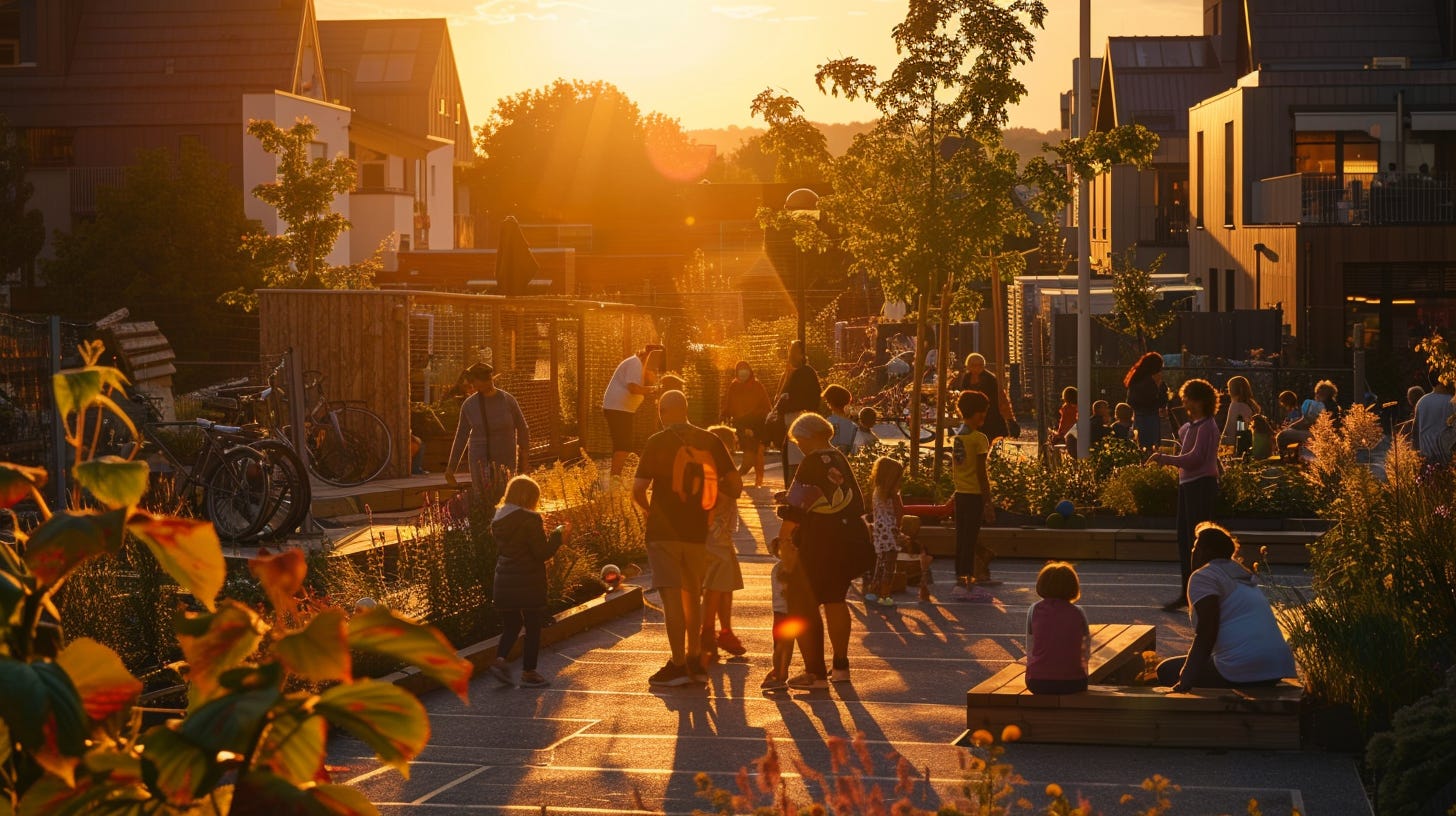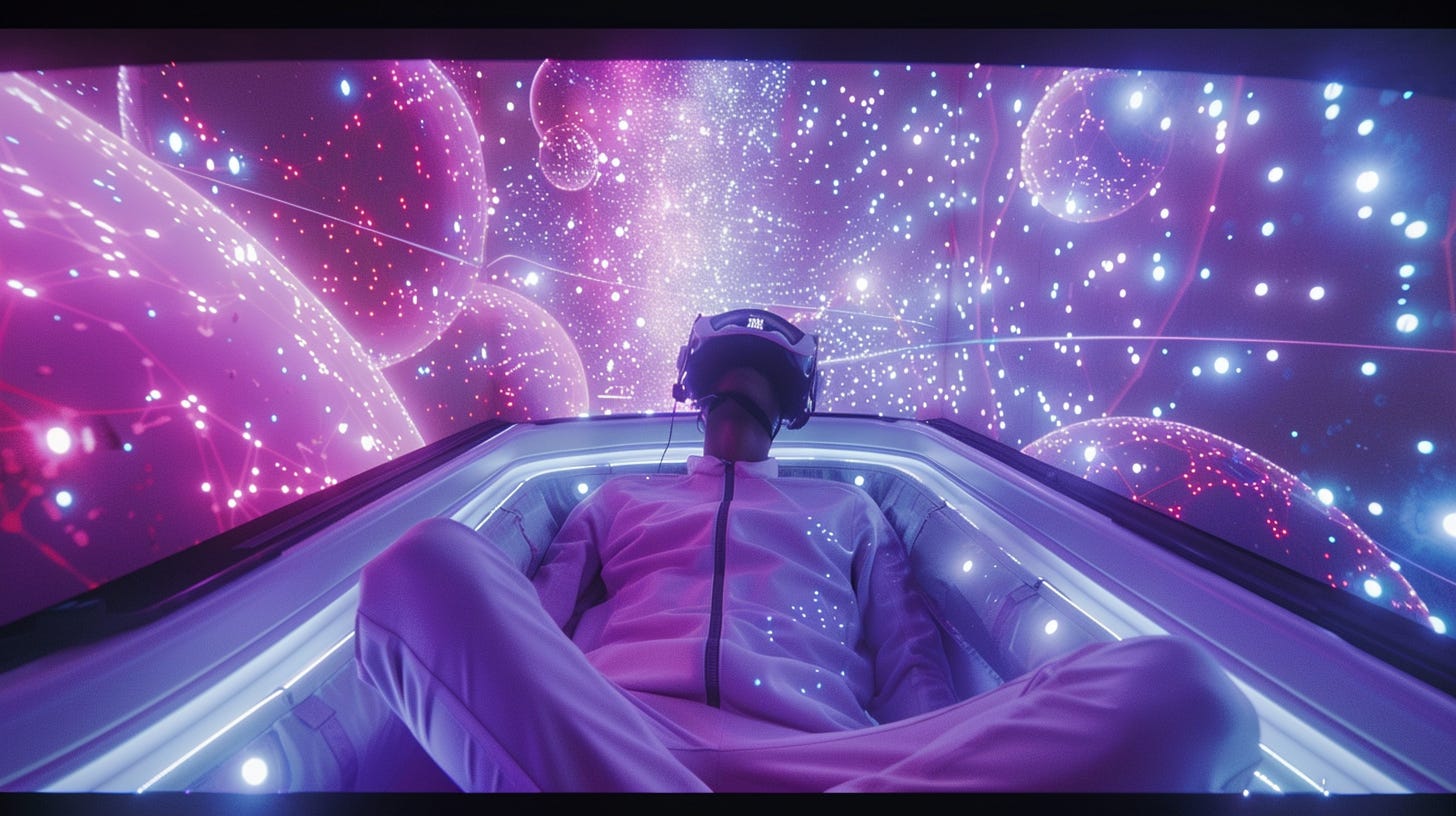Protopia Volume I: The Silver Tsunami
The Future of Aging: Innovating Against Elderly Isolation and Frailty.
Introduction
Protopia, introduced by futurist Kevin Kelly, signifies gradual improvement—each day better than the last, if only by a small margin.
Unlike the unreachable perfection of utopia or the despair of dystopia, protopia celebrates steady, incremental progress.
It recognizes that each step forward brings both new challenges and advantages, complicating predictions.
This concept emphasizes practical solutions to societal challenges, envisioning a future of continuous, technology-driven, and socially-evolved progress.
With this perspective, I've blended the progressive essence of Protopia with the creative methodologies of Speculative Design and Speculative Fiction in my projects. The primary goal is to consistently ensure these endeavors remain true to their fundamental purpose: fostering positive, gradual change in our societies.
Through collaborative exploration and innovation, I’d like to address the twin challenges of frailty and dependence, as well as social isolation and loneliness, that accompany ageing.
This project not only highlights the pressing need for creative solutions but also actively seeks contributions from thinkers, designers, policymakers, and the public to craft an inclusive, adaptive society that honors and supports its aging members.
With scenarios ranging from equitable technological integration to harmonized community networks and from ethical AI and human touch to building an inclusive and adaptive society, I invite you to participate with your own thoughts in the comments.
Challenge
The global population is aging at an unprecedented rate, with the number of individuals over 65 years of age rising from 461 million in 2004 to an estimated 2 billion by 2050 (source 1, source 2).
As societies worldwide stand on the brink of a demographic revolution, the "Silver Tsunami" is set to redefine aging in the next three decades, introducing challenges and opportunities in equal measure.
Scope
This project zeroes in on two critical issues stemming from this demographic shift:
1. Frailty and Dependence.
There's a common perception that ageing automatically leads to frailty and dependence, a stereotype that fuels discrimination and influences policy decisions detrimentally (WHO).
Frailty is described as a condition marked by increased vulnerability due to the decline in bodily reserves and function across various physiological systems, impairing the individual's ability to manage daily and acute stressors effectively.
2. Social Isolation and Loneliness
Compounded by ageism and antiquated social norms, many elderly individuals, especially those in both rural and urban settings, find themselves isolated and sidelined.
This exclusion not only diminishes their quality of life but also has broader implications for societal health and cohesion.
What if technology and social structures became so affordable and user-friendly that access disparities diminished significantly?
This contradicts the assumption of an inevitable digital divide, suggesting a future where rapid innovation and policy interventions successfully democratize access to health technology, making it a universal benefit rather than a source of inequality.
Scenarios
Probable Future
Equitable Technological Integration
In this scenario, technological advancements in health monitoring and care have become widely available, thanks to policies aimed at ensuring equitable access.
These technologies are designed with input from elderly users, ensuring they meet their needs and preferences.
While this significantly enhances the quality of life for many older adults, challenges remain in ensuring these technologies are used effectively and ethically.
Continuous efforts are needed to bridge remaining gaps in digital literacy and to safeguard against data privacy concerns, ensuring that technology serves as a tool for empowerment rather than exclusion.
Possible Future
Harmonized Community Networks
Communities have become the backbone of support for the aging population, with a rich tapestry of services and programs that cater to their diverse needs.
This network is supported by technology that enhances connectivity and resource sharing among communities, allowing for a more unified approach to elder care.
However, this scenario also recognizes that community cohesion requires ongoing effort, funding, and the willingness to adapt to the changing needs of its members.
Success varies by region, reflecting differences in resources, leadership, and community engagement.
Plausible Future
Ethical AI and Human Touch
The integration of AI and personal assistant robots in elder care has advanced, providing valuable support and companionship to the elderly.
These technologies have been developed and deployed within strong ethical frameworks that prioritize the enhancement of human interaction rather than its replacement.
The scenario acknowledges the potential of AI to improve lives but also recognizes the critical importance of maintaining human connections.
Efforts are concentrated on training caregivers and family members to use these tools in ways that augment rather than diminish personal care and emotional bonds.
These balanced scenarios aim to present a holistic view of the future, one that is optimistic about the potential for technology, community, and societal change to enhance the lives of the elderly, while also being realistic about the challenges and limitations that must be addressed.
By acknowledging both the positive possibilities and the hurdles that lie ahead, this approach strives to minimise confirmation bias, presenting a nuanced vision of the future that invites continued discussion and innovation.
Preferable Future
2037: An Ideal Status Quo.
In 2037, the world has been transformed by a seismic shift in demographics, technology, and societal values. Amid this transformation, two critical issues have emerged as central to our collective experience: the challenges of frailty and dependence in an aging population, and the pervasive sense of social isolation and loneliness among the elderly.
As the global population ages, with an estimated 1.25 billion individuals over 65 years of age, a new society where these challenges are met not with resignation but with innovative spirit and a drive towards inclusivity has unfolded.
Imagine a community where the streets and buildings have been redesigned to accommodate the needs of the elderly seamlessly. Mobility is no longer a privilege but a right, ensured by advanced transportation systems that cater to all levels of physical ability.


Homes are equipped with smart technologies that support independent living, from voice-activated appliances to health monitoring systems that predict and prevent medical emergencies before they occur.

In this society, the digital divide has been bridged by initiatives that ensure technology is accessible and user-friendly for all ages. Virtual reality platforms offer immersive experiences that connect the elderly with distant loved ones and allow them to travel the world from the comfort of their homes. Social robots serve as companions, reducing loneliness and providing interactive entertainment and cognitive stimulation.

Education and lifelong learning are valued highly, with online platforms and multidisciplinary community centers offering courses and virtual workshops tailored to the interests and needs of older adults. These initiatives not only keep the mind sharp but also foster a sense of purpose and belonging.
In response to the challenge of social isolation, communities have been reimagined to promote intergenerational living and interaction. Mixed-age neighborhoods encourage relationships between young and old, breaking down ageist stereotypes and fostering mutual understanding and respect. Public spaces are designed to be inclusive, hosting events and activities that appeal to all generations.

Amid these changes, an inclusive and adaptive society that values and integrates the elderly is developed. Ageism is on the decline, and the contributions of older adults are recognized and valued. This society acknowledges that cultural change is incremental and requires sustained effort across generations. It envisions a future that continually adapts its structures and attitudes to be more inclusive, recognizing this as a dynamic process that must evolve with time.
In this future, frailty and dependence are not seen as inevitable consequences of aging but as challenges to be addressed through innovation, compassion, and a deep commitment to social inclusion.
The elderly are not isolated figures on the periphery of society but active, valued participants in a community that celebrates diversity in all its forms. This is a world where technology serves humanity, bridging gaps rather than creating them, and where the wisdom of age is a treasure shared with all.
Speculative Products
I found the idea of speculating about products that might align with the preferable or plausible future to be a fascinating thought experiment.
It was a fun challenge to design and envision these potential innovations, imagining how they could seamlessly integrate into the world of tomorrow.
This creative exercise not only sparked joy but also pushed me to think about the future in a more concrete and optimistic way.
Here is the list:
Quantum Health Weave
The Quantum Health Weave is an ultra-thin, molecularly engineered fabric that wraps around the body, serving as a second skin that not only monitors health at a cellular level but also corrects imbalances using quantum computing principles.
It can detect potential health issues before they manifest and administer precise treatments, ranging from nutrient delivery to gene editing, all personalized to the wearer's DNA profile.
This wearable technology represents a revolution in preventive medicine and personal health care.
NanoDoc Swarm
NanoDoc Swarm consists of billions of nanobots programmed to repair and rejuvenate the body from within. These microscopic robots can target everything from cellular damage due to aging to specific disease processes, operating at a level of precision and efficiency far beyond traditional medicine.
They are controlled through a user-friendly interface that allows individuals to set health objectives and track the progress of their internal rejuvenation.
Astral Projection Pod
The Astral Projection Pod is an advanced meditation chamber that uses neuro-sensory stimulation to induce controlled out-of-body experiences, allowing users to explore distant places, real or imagined, without physical limitations.
It’s designed to offer the elderly not just a break from the physical constraints of aging but a profound expansion of consciousness and a new way of interacting with the world and each other on an astral plane.
Last words.
This was my first Protopia project.
I picked a topic I knew little about to really push myself out of my comfort zone as much as I could. It's been a really rewarding journey.
Even though I imagined a pretty hopeful future, I'm worried about the challenges of an aging population and how we can do right by our elderly in the coming years.
There's a bit of a personal angle too – I'm middle-aged and I want to do my bit to make the world a better place for my later years.
I trust you found this thought experiment stimulating, I invite you to join the dialogue in the comments below.
Research
For more detailed exploration:
https://www.who.int/news-room/fact-sheets/detail/ageing-and-health https://www.ncbi.nlm.nih.gov/pmc/articles/PMC3404305/
https://www.weforum.org/agenda/2021/03/ageing-looming-crisis-or-booming-opportunity/
https://www.forbes.com/sites/nextavenue/2018/04/06/the-8-challenges-of-aging/?sh=6f6c08861f4a
https://www.smithlifehomecare.com/blog/what-are-the-biggest-challenges-for-elderly-people-in-our-society/ https://assets.publishing.service.gov.uk/media/5d273adce5274a5862768ff9/future-of-an-ageing-population.pdf
Challenges in Design and Development of Nanorobots for Medical Applications
A Review on Applications of Nanobots in Combating Complex Diseases
Effects of binaural beats and isochronic tones on brain wave modulation: Literature review.
speculativeeverything.com © 2024 by mrkeena is licensed under CC BY-SA 4.0












